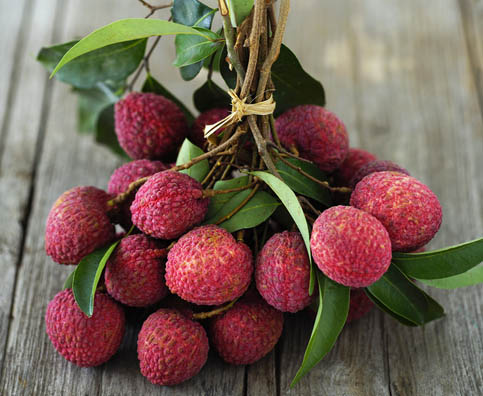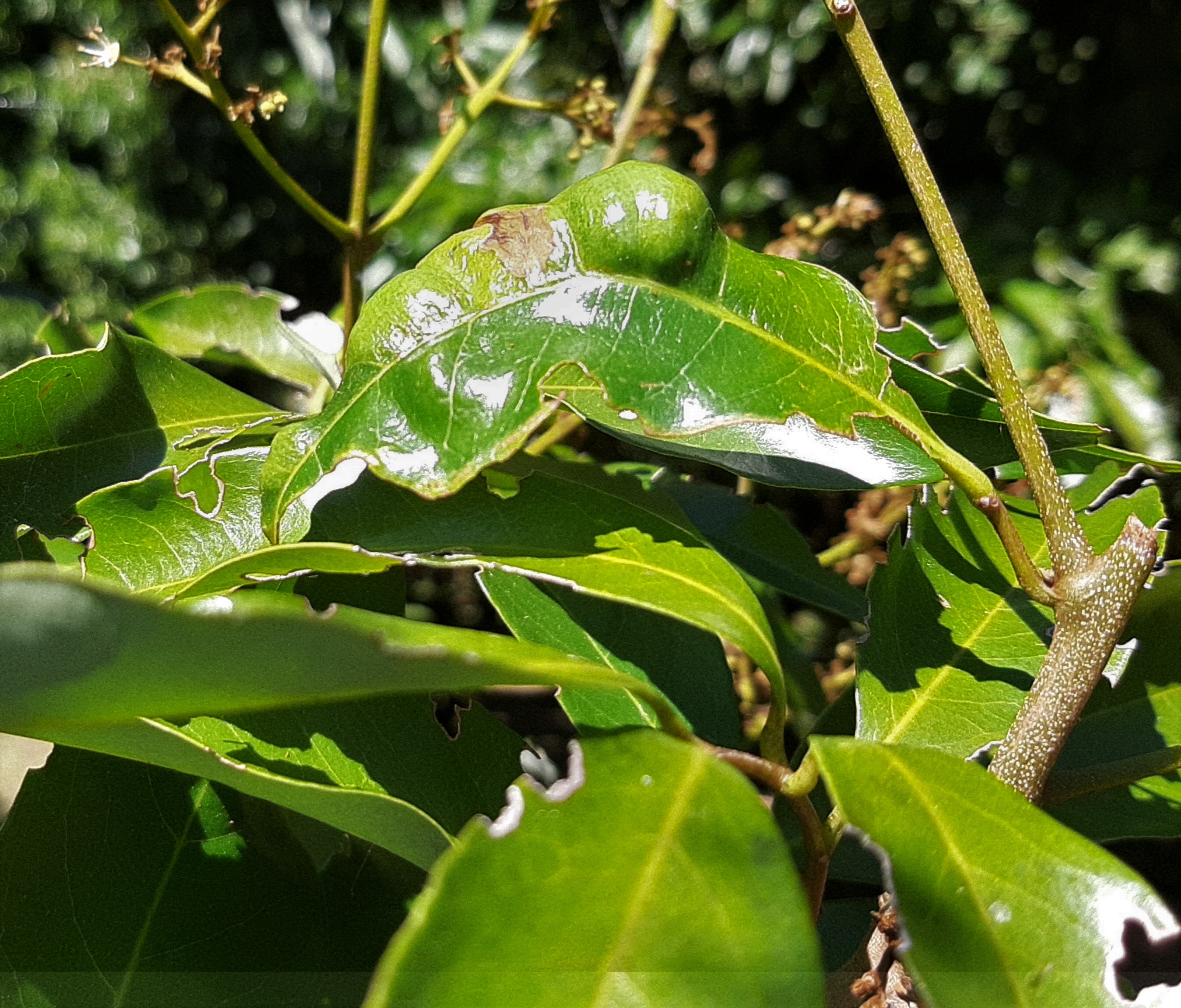 Florida Department of Agriculture and Consumers Services (FDACS) has recently confirmed finding active Lychee Erinose Mite (LEM) [trec.ifas.ufl.edu] in Palm Beach County. If you suspect your tree has LEM, do not touch the plant as you can spread the mite. Please contact FDACS – DPI at 1-888-397-1517 or DPIHelpline@FDACS.gov.
Florida Department of Agriculture and Consumers Services (FDACS) has recently confirmed finding active Lychee Erinose Mite (LEM) [trec.ifas.ufl.edu] in Palm Beach County. If you suspect your tree has LEM, do not touch the plant as you can spread the mite. Please contact FDACS – DPI at 1-888-397-1517 or DPIHelpline@FDACS.gov.
This new threat to south Florida lychee was previously found in Lee County on Pine Island in February 2018 where lychee fruit and plant parts remain under quarantine [fdacs.gov]. Lychee Erinose Mites, Aceria litchii, was recently found in a backyard lychee tree in the northern portion of Miami-Dade County and FDACS has also confirmed finding LEM in Palm Beach County.
This tiny pest mite is too small to see with the unaided eye but the LEM feeding damage is distinctive and recognizable. LEM feeds on the new flush of leaves resulting in leaf distortion, blistering, and enlarged hairs or trichomes referred to as erinea. In high mite infestations, the erinea may cover the entire underside of the leaf, develop on flowers, and fruit causing poor fruit set and unmarketable quality.
On May 26, 2020, UF/IFAS Research and Extension held a virtual workshop with FDACS to update the grower community on the status of LEM eradication efforts in Florida. Here is a link to the recorded meeting: https://ufl.zoom.us/rec/play/ucUucruhrWg3TN3HuASDUPJ-W47rLP2s0iBN86cIy0yyVHcKZAH1brIbYqF0ZlXcPrxtG6XGCYsiM0Y?continueMode=true&_x_zm_rtaid=BIRJeggKTEm8_Yl0LvbaXw.1590495904392.a1dc03c0697bbe0d8420da89d5ad08b5&_x_zm_rhtaid=737 [ufl.zoom.us]
 Be on the lookout for any leaf distortion or small blisters containing silver to white colored hairs on the underside of the new leaf flush or rust-color hairs on older foliage. As the infestation progresses, these hairs turn reddish-brown and may ultimately cover the entire leaf. These hairy "erinea" may also be found on young stems, flowers, and fruit. This pest mite can move via air currents, honey bees, or humans touching the symptomatic leaves.
Be on the lookout for any leaf distortion or small blisters containing silver to white colored hairs on the underside of the new leaf flush or rust-color hairs on older foliage. As the infestation progresses, these hairs turn reddish-brown and may ultimately cover the entire leaf. These hairy "erinea" may also be found on young stems, flowers, and fruit. This pest mite can move via air currents, honey bees, or humans touching the symptomatic leaves.
The Sunshine State is the leading producer of lychee [edis.ifas.ufl.edu] in North America. South Florida's lychee industry is valued at $19.3 million and produces an average 3.2 million pounds of fruit annually on an estimated 700 acres.
You can find more information on this pest by:.jpg)
· Visiting the UF IFAS Tropic Research and Education Center LEM website [trec.ifas.ufl.edu]
· Reviewing the FDACS Residential and Nursery Control Actions
· By contacting the Palm Beach County Master Gardener Hotline at 561-233-1750
· (NEW) LEM Lychee Tree Recovery Post-severe Pruning
Photos: (left top:) Lychee leaf blister caused by LEM and Whitish hairs and (left bottom): leaf distortion caused by lychee erinose mite (LEM)
*****